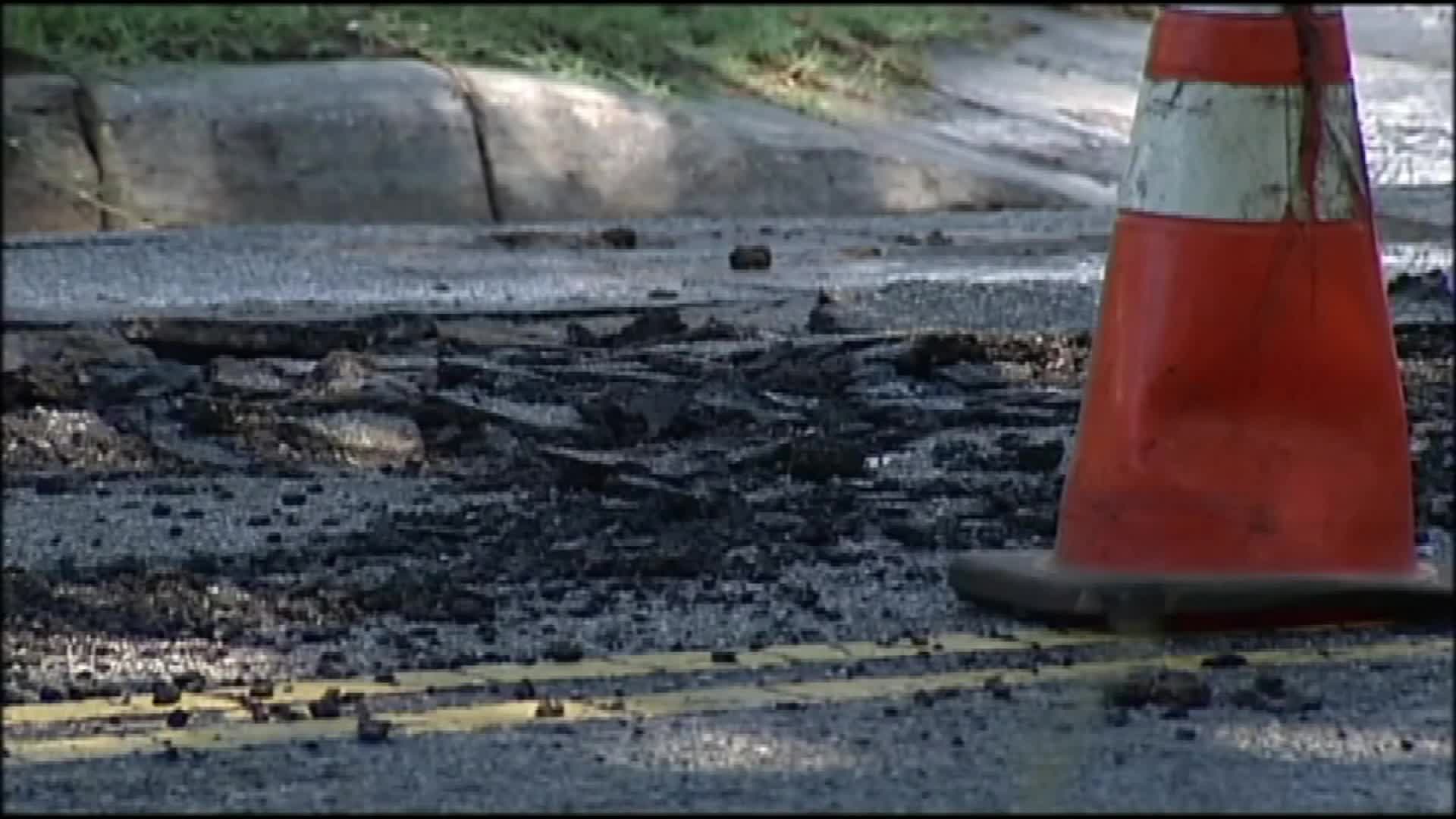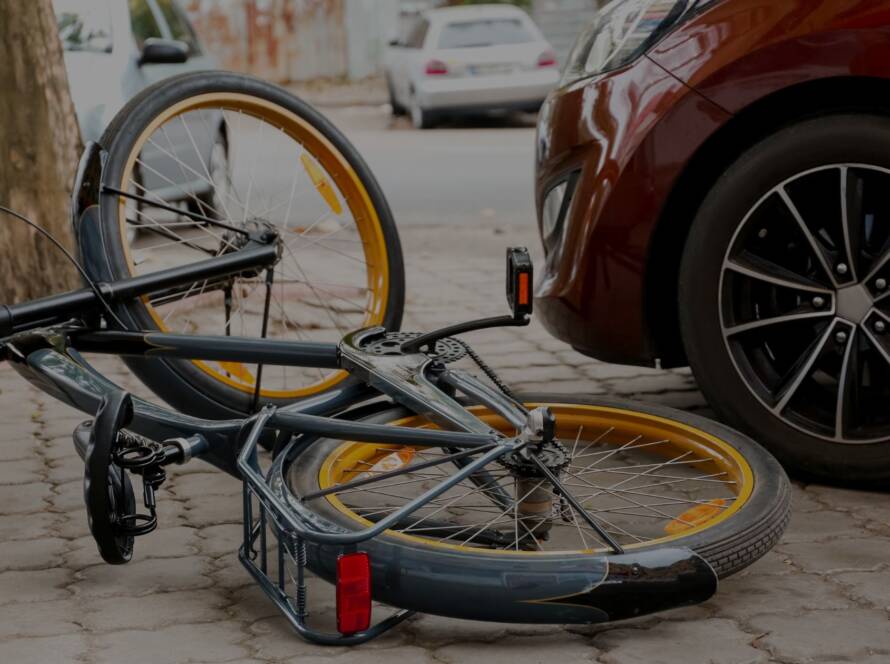In 2025, Las Vegas saw a 15% increase in head-on collisions compared to the previous year. I remember driving down the Strip last week, marveling at the futuristic skyline, when suddenly traffic came to a standstill. A head-on collision had occurred just ahead, reminding me of the persistent dangers on our roads despite technological advancements.

Source: lasvegas.com
Table of Contents
- The Evolving Landscape of Head-On Collisions in Las Vegas
- The Psychology of Head-On Collisions in the Entertainment Capital
- Legal and Insurance Innovations for Head-On Collisions
- Environmental Factors Unique to Las Vegas
- Technological Advancements in Collision Prevention and Response
- Socioeconomic Factors Influencing Head-On Collisions in Las Vegas
The Evolving Landscape of Head-On Collisions in Las Vegas
As we approach 2025, Las Vegas is experiencing significant changes in the nature of head-on collisions. These changes are driven by advancements in vehicle technology, urban planning, and traffic management systems. The city’s unique characteristics as a global entertainment hub also play a crucial role in shaping the landscape of these accidents.
According to the Nevada Department of Transportation, Las Vegas had 20,324 car accidents in 2021 alone, with LVMPD reporting that 43% of Nevada’s annual car crashes happen in Vegas. These statistics highlight the urgent need for innovative solutions to address the rising number of collisions in our city.
“Two dead in wrong-way crash on I-15 northeast of Las Vegas” (News 3 Las Vegas)
Autonomous Vehicle Integration and Its Impact
The increasing presence of autonomous vehicles on Las Vegas roads is reshaping the dynamics of head-on collisions. These self-driving cars bring new challenges and opportunities for road safety, particularly in how they interact with human-driven vehicles and navigate the city’s unique road layout.

Source: datocms-assets.com
AI Decision-Making in Critical Situations
AI algorithms in autonomous vehicles are now making split-second decisions to avoid head-on collisions. This raises important questions about the ethical implications of these choices and how they compare to human decision-making in similar situations. For instance, how does an AI decide between swerving into oncoming traffic or potentially hitting a pedestrian? These are complex issues we’re grappling with as our roads become more technologically advanced.
Human-AI Interaction Zones
As autonomous and human-driven vehicles share the roads, new challenges arise in areas where they interact. These “interaction zones” are particularly critical when it comes to preventing head-on collisions, requiring both technological solutions and driver education. I’ve noticed more of these zones popping up around the city, especially near popular tourist destinations where foot traffic is heavy.
| Interaction Zone Type | Risk Level | Key Safety Measures |
|---|---|---|
| Intersections | High | Advanced traffic signals, V2I communication |
| Merging Areas | Medium | Lane assistance systems, predictive algorithms |
| Tourist-Heavy Streets | High | Enhanced pedestrian detection, speed limiting |
| Highway On/Off Ramps | Medium | Wrong-way detection systems, clear signage |
Smart Infrastructure and Collision Prevention
Las Vegas’s investment in smart city technology is creating new opportunities for preventing head-on collisions. From AI-powered traffic management to advanced road design, these innovations aim to make the city’s streets safer for all users. It’s fascinating to see how our city is evolving to meet these challenges head-on (pun intended).

Source: archpaper.com
Predictive Traffic Flow Systems
AI-powered traffic management systems in Las Vegas can now anticipate and prevent conditions that lead to head-on collisions. These systems analyze real-time data from various sources to optimize traffic flow and alert drivers to potential dangers. I’ve noticed a significant improvement in traffic flow on the Strip since these systems were implemented, especially during peak tourist seasons.
Vehicle-to-Infrastructure (V2I) Communication
V2I technology is playing an increasingly important role in alerting drivers and autonomous vehicles about potential head-on collision risks in real-time. This system allows for seamless communication between vehicles and Las Vegas’s smart infrastructure. It’s like having an extra set of eyes on the road, constantly scanning for potential hazards.
[Video Source: YouTube]
The Psychology of Head-On Collisions in the Entertainment Capital
Las Vegas’s unique environment as an entertainment hub introduces distinct psychological factors that contribute to head-on collisions. The city’s 24/7 party atmosphere, combined with a high volume of tourists and locals navigating busy streets, creates a complex psychological landscape for drivers. Understanding these factors is crucial for preventing accidents.
A study found that 42.7% of Nevada’s fatal car accidents are caused by intoxicated drivers, highlighting the significant impact of Las Vegas’s party culture on road safety. This statistic is particularly alarming and underscores the need for targeted interventions in our city.
The “Vegas Effect” on Driving Behavior
The city’s 24/7 party atmosphere significantly influences driver decision-making and risk-taking behaviors that lead to head-on collisions. Understanding this “Vegas Effect” is crucial for developing effective prevention strategies. I’ve witnessed firsthand how the excitement and energy of the city can lead to poor choices behind the wheel.
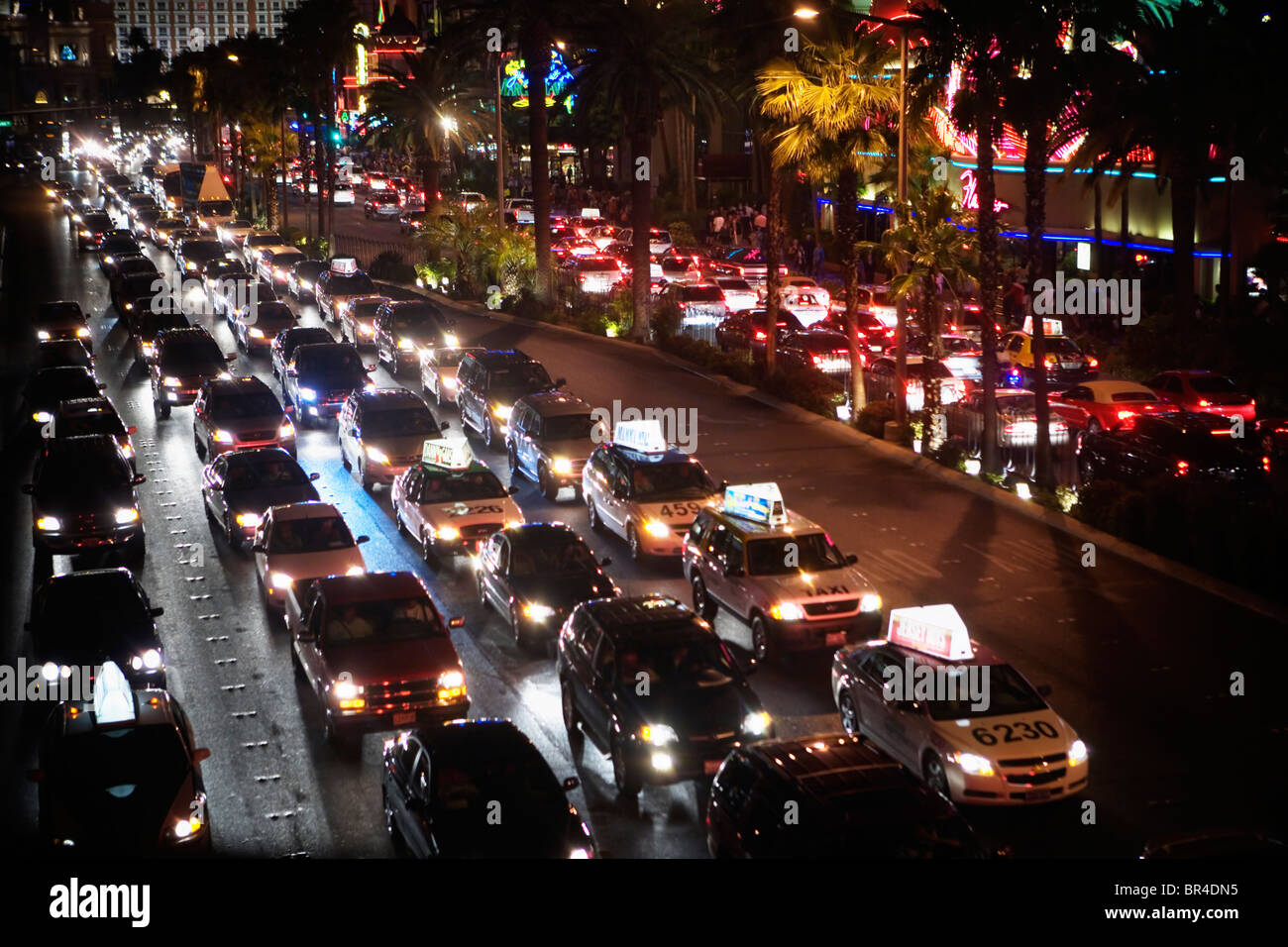
Source: alamy.com
Circadian Rhythm Disruption and Collision Risk
Las Vegas’s round-the-clock lifestyle disrupts many drivers’ circadian rhythms, increasing the likelihood of head-on collisions. This factor is particularly significant for both tourists adjusting to the city’s pace and locals working non-traditional hours. As someone who’s worked night shifts on the Strip, I can attest to the challenges of staying alert and focused while driving at odd hours.
Impaired Judgment in the City of Excess
The role of alcohol, drugs, and fatigue in head-on collisions is amplified in Las Vegas’s unique entertainment landscape. The city’s reputation for excess creates additional challenges for maintaining road safety. It’s not uncommon to see drivers who’ve clearly had one too many trying to navigate our busy streets, putting everyone at risk.
Tourist Drivers and Unfamiliar Road Systems
Las Vegas’s high volume of tourist drivers presents unique challenges for preventing head-on collisions. Unfamiliarity with the road system, combined with the distractions of the city, increases the risk of accidents. I often find myself being extra cautious when I spot out-of-state license plates, knowing that these drivers might be overwhelmed by our unique road layout.
“Clark County Coroner identifies person killed in wrong-way crash on 215 near 95” (KTNV Las Vegas)
GPS Reliance and Distracted Driving
Tourists’ heavy reliance on GPS navigation systems contributes to distracted driving and potential head-on collisions. The complex road layout of Las Vegas, combined with the city’s visual distractions, exacerbates this issue. I’ve lost count of the number of times I’ve seen drivers making last-minute turns or lane changes because they were too focused on their GPS instead of the road.

Source: gocartours.com
Cultural Differences in Driving Norms
The diverse driving cultures among international tourists impact the risk of head-on collisions in Las Vegas. Different expectations and habits on the road can lead to misunderstandings and dangerous situations. It’s fascinating to observe how drivers from different countries interpret our road signs and traffic patterns, but it can also be nerve-wracking when those interpretations lead to risky maneuvers.
Legal and Insurance Innovations for Head-On Collisions
As the nature of head-on collisions evolves in Las Vegas, so too do the legal and insurance frameworks surrounding these incidents. New technologies and changing traffic patterns are forcing a reevaluation of liability and compensation models. It’s a complex landscape that’s constantly shifting, and staying informed is crucial for both drivers and legal professionals.
Learn more about handling Las Vegas accident claims to better understand the legal process following a collision.
Multi-Party Liability in Autonomous Vehicle Collisions
The introduction of autonomous vehicles complicates liability determination in head-on collisions, requiring new legal approaches. This shift is particularly significant in Las Vegas, where the mix of human-driven and autonomous vehicles is rapidly evolving. As a lawyer specializing in traffic accidents, I’ve seen firsthand how these cases are becoming increasingly complex.
Manufacturer Liability vs. Human Error
The balance of liability between vehicle manufacturers and human drivers in head-on collisions involving autonomous or semi-autonomous vehicles is shifting. This change is reshaping the legal landscape for accident claims in Las Vegas. We’re seeing more cases where the question isn’t just “who was at fault?” but “what was at fault?” – the human driver or the vehicle’s AI system?
Data Privacy and Collision Investigations
Accessing and using vehicle data in head-on collision investigations and legal proceedings presents new challenges. The balance between thorough investigations and protecting individual privacy is a growing concern in Las Vegas. I’ve been involved in cases where the data from a vehicle’s black box was crucial evidence, but obtaining that data required navigating a complex web of privacy laws and manufacturer protocols.
Innovative Insurance Models for the 2025 Las Vegas Driver
Insurance companies are adapting to the changing landscape of head-on collisions with new, tech-driven models. These innovations aim to provide more accurate risk assessment and faster claim processing for Las Vegas drivers. It’s an exciting time in the insurance industry, with new products and services emerging to meet the unique needs of our city’s drivers.

Source: venngage.com
Usage-Based Insurance and Collision Prevention
Insurers are using telematics and AI to offer personalized policies that incentivize safer driving and reduce head-on collision risks. This approach is particularly relevant in Las Vegas’s unique driving environment. I recently switched to a usage-based insurance policy myself, and it’s been eye-opening to see how my driving habits affect my premiums.
Blockchain-Based Instant Claims Processing
Blockchain technology has the potential to revolutionize the claims process for head-on collisions, providing faster resolution for victims. This innovation is particularly beneficial in Las Vegas, where efficient claim processing is crucial for both residents and tourists. Imagine being able to file a claim and receive a payout within hours of an accident – that’s the future we’re moving towards.
Environmental Factors Unique to Las Vegas
Las Vegas’s distinct climate and geography play a significant role in car accidents. The extreme heat, arid conditions, and unique urban layout create challenges for road safety that require specialized solutions. As someone who’s lived here for years, I can attest to the impact these environmental factors have on our daily driving experiences.
A study found that 70% of weather-related crashes in Las Vegas were caused by wet pavement and 46% occurred during rain, highlighting the significant impact of sudden weather changes on road safety in the desert city. These statistics might surprise those who think of Las Vegas as a perpetually dry place, but they underscore the importance of being prepared for all types of weather conditions.
Desert Climate and Its Effects on Road Conditions
The extreme heat and arid conditions of Las Vegas create unique challenges for preventing head-on collisions. These environmental factors affect both vehicle performance and road conditions, increasing the risk of accidents. I’ve seen firsthand how quickly our roads can deteriorate under the relentless desert sun, creating hazards that drivers need to be aware of.
Source: arcpublishing.com
Heat-Induced Tire Blowouts and Collision Risk
High temperatures increase the risk of tire failures, potentially leading to head-on collisions. Understanding and mitigating this risk is crucial for road safety in Las Vegas’s extreme climate. I always make sure to check my tire pressure before long drives, especially during the summer months when the asphalt can reach scorching temperatures.
Dust Storms and Visibility Challenges
Sudden dust storms in Las Vegas can severely impact driver visibility, increasing the risk of head-on collisions. Emerging technologies aim to mitigate these risks and improve safety during these weather events. I’ve been caught in a few of these storms myself, and it’s a truly unnerving experience when visibility drops to near zero in a matter of seconds.
Urban Heat Island Effect on Driver Behavior
Las Vegas’s intense urban heat island effect influences driver behavior and vehicle performance, contributing to head-on collision risks. Understanding these effects is crucial for developing effective safety measures. The shimmering heat rising from the pavement isn’t just a visual effect – it can have real impacts on how we perceive and react to traffic conditions.
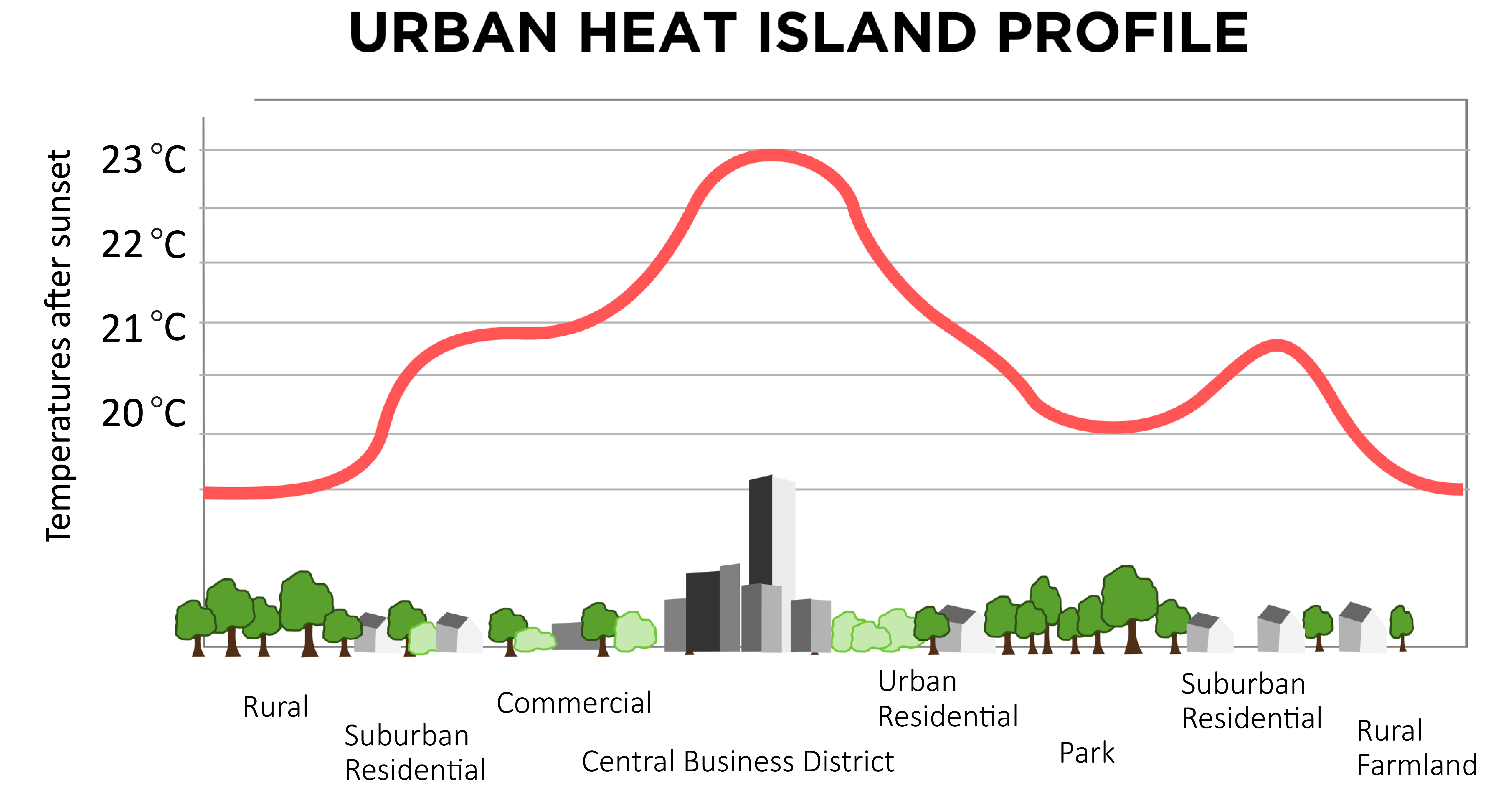
Source: metlink.org
Heat-Induced Aggression and Road Rage
Extreme heat correlates with increased aggressive driving behaviors that may lead to head-on collisions. This phenomenon is particularly pronounced in Las Vegas’s unique urban environment. I’ve noticed my own patience wearing thin during long, hot commutes, and it’s a constant effort to stay calm and focused behind the wheel.
Vehicle Cooling Systems and Safety
Advancements in vehicle cooling technologies by 2025 could reduce heat-related mechanical failures that contribute to head-on collisions. These innovations are particularly relevant for improving road safety in Las Vegas’s extreme climate. The latest cooling systems are not just about passenger comfort – they play a crucial role in maintaining vehicle performance and safety in our harsh desert environment.
Technological Advancements in Collision Prevention and Response
By 2025, Las Vegas is at the forefront of implementing cutting-edge technologies to prevent and respond to head-on collisions. These innovations range from advanced driver assistance systems to AI-powered emergency response protocols, all aimed at reducing the frequency and severity of accidents.
Advanced Driver Assistance Systems (ADAS) in Urban Settings
The evolution of ADAS technologies is reshaping how vehicles navigate Las Vegas’s unique urban landscape and prevent head-on collisions. These systems are becoming increasingly sophisticated, adapting to the city’s specific challenges.
| ADAS Feature | Urban Effectiveness | Highway Effectiveness | Las Vegas-Specific Adaptations |
|---|---|---|---|
| Lane Departure Warning | Moderate | High | Enhanced for complex intersections |
| Adaptive Cruise Control | Low | High | Modified for stop-and-go traffic |
| Pedestrian Detection | High | Low | Optimized for crowded tourist areas |
| Traffic Sign Recognition | High | Moderate | Customized for unique Vegas signage |
AI-Powered Predictive Collision Avoidance
AI algorithms now analyze real-time traffic patterns and driver behavior to predict and prevent potential head-on collisions before they occur. This technology is particularly effective in Las Vegas’s dynamic traffic environment. The system’s ability to process vast amounts of data and make split-second decisions has already prevented numerous accidents on our busiest streets.
Augmented Reality Heads-Up Displays (AR-HUD)
AR-HUD technology is revolutionizing how drivers perceive and interact with their environment, significantly reducing the risk of head-on collisions. These displays project crucial information directly onto the windshield, allowing drivers to keep their eyes on the road while accessing important data. I recently test-drove a vehicle equipped with this technology, and it felt like stepping into the future of driving.
Post-Collision Response and Management
Innovations in post-collision response are changing how emergency services and law enforcement handle head-on collisions in Las Vegas. These advancements aim to improve response times and outcomes for accident victims.
Drone-Assisted Accident Scene Management
Autonomous drones now play a crucial role in rapid accident scene assessment and traffic management following head-on collisions in Las Vegas. This technology significantly improves response times and situational awareness for emergency services. Watching these drones in action is truly impressive – they can provide a comprehensive overview of an accident scene in minutes, helping first responders prioritize their efforts.
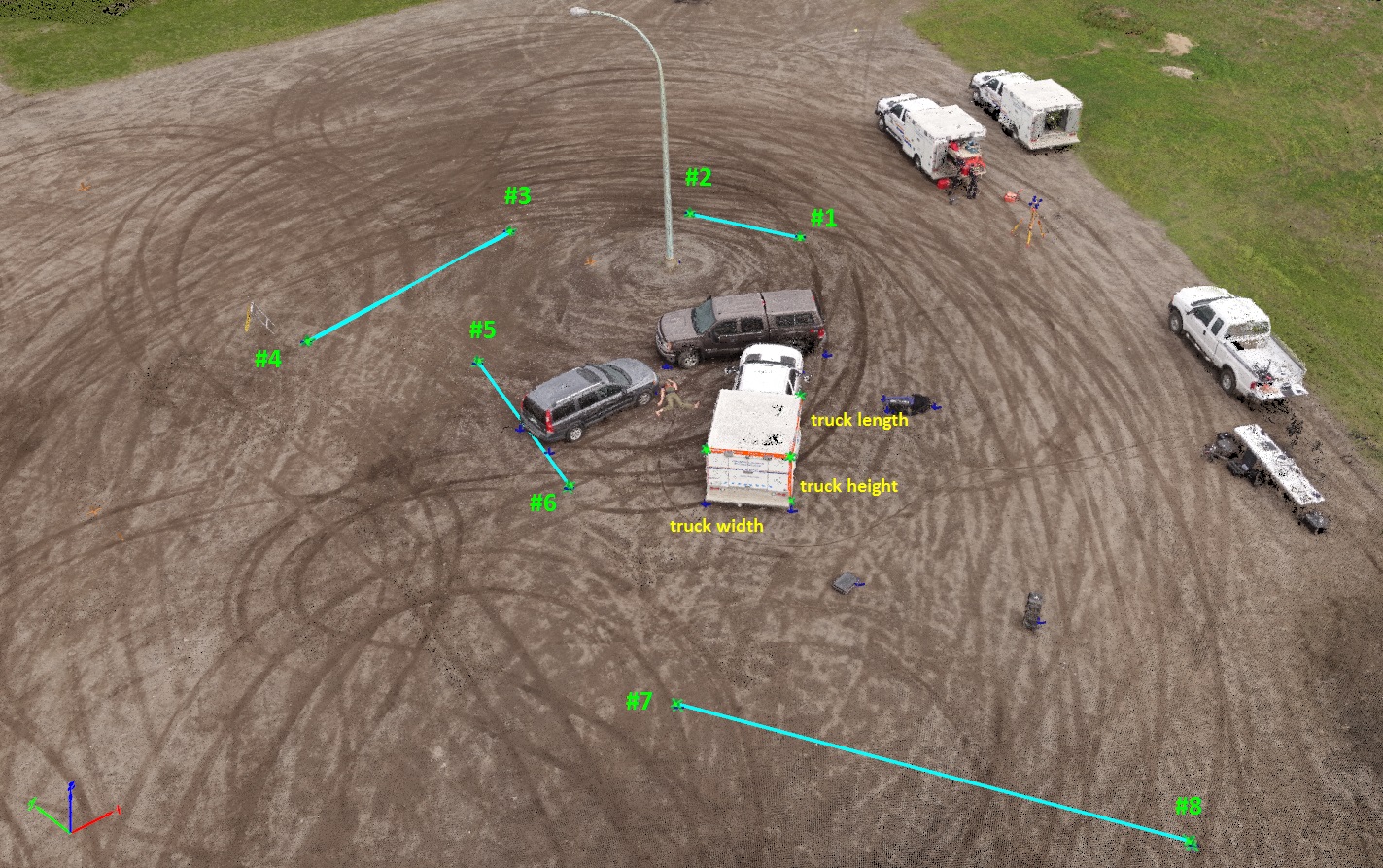
Source: ctfassets.net
AI-Driven Triage and Resource Allocation
AI systems optimize emergency response resources for head-on collisions in Las Vegas, potentially reducing response times and improving outcomes for victims. This technology considers multiple factors to prioritize and allocate resources efficiently. The speed and accuracy with which these systems can assess a situation and deploy the right resources are truly remarkable.
Socioeconomic Factors Influencing Head-On Collisions in Las Vegas
The socioeconomic landscape of Las Vegas in 2025 significantly impacts the occurrence and consequences of head-on collisions. Economic disparities, work patterns, and community initiatives all play roles in shaping road safety outcomes and the frequency of accidents.
Economic Disparities and Vehicle Safety
The widening economic gap in Las Vegas affects access to safer vehicles and advanced safety features, influencing head-on collision rates and outcomes. This disparity creates a two-tiered system of road safety.
The “Safety Divide” in Vehicle Technology
Economic disparities create a divide in access to vehicles with advanced collision prevention technologies, potentially increasing head-on collision risks for lower-income drivers. This technological gap has significant implications for overall road safety in Las Vegas. It’s disheartening to see how income levels can directly correlate with one’s chances of surviving a serious accident.
Community-Based Safety Initiatives
Grassroots efforts and public-private partnerships aim to bridge the safety gap and reduce head-on collision risks across all socioeconomic levels in Las Vegas. These initiatives focus on education, technology access, and infrastructure improvements. I’ve been involved in several of these programs, and it’s inspiring to see communities coming together to address these critical safety issues.
Shift Work and Fatigue-Related Collisions
Las Vegas’s 24/7 economy and prevalent shift work culture contribute to driver fatigue, increasing the risk of head-on collisions. This issue affects a significant portion of the city’s workforce, particularly in the hospitality and entertainment sectors.
Innovative Fatigue Detection Systems
Emerging technologies designed to detect driver fatigue and prevent head-on collisions are particularly relevant for shift workers in Las Vegas’s hospitality and entertainment industries. These systems use various indicators to alert drivers and prevent accidents. The technology’s ability to pick up on subtle signs of fatigue, often before the driver is even aware of them, is truly remarkable.
Employer Responsibility and Collision Prevention
The role of employers in preventing fatigue-related head-on collisions is evolving, with potential legal and policy changes by 2025. This shift recognizes the impact of work schedules on road safety and places more responsibility on employers to mitigate risks. Some companies are now offering shuttle services or subsidized ride-sharing for employees working late shifts, which is a step in the right direction.
Learnings Recap
- Head-on collisions in Las Vegas are influenced by a complex interplay of technological, environmental, and socioeconomic factors.
- Advancements in vehicle technology and smart infrastructure offer promising solutions but also introduce new challenges.
- The unique characteristics of Las Vegas, including its 24/7 economy and tourist influx, require tailored approaches to road safety.
- Addressing economic disparities in access to safety technologies is crucial for comprehensive collision prevention.
- Employer involvement and innovative fatigue management strategies are key to reducing shift work-related collisions.
For more information on handling the aftermath of a crash in Las Vegas, visit our accident claims page.
Ultra Law understands the complexities of head-on collisions in Las Vegas’s unique environment. Our team stays up-to-date with the latest technological and legal developments to provide you with expert representation. If you’ve been involved in a head-on collision, don’t navigate this challenging situation alone. Contact Ultra Law today for a free consultation and let us help you secure the compensation you deserve.
Learn more about our specialized legal services for accident victims in Las Vegas.



